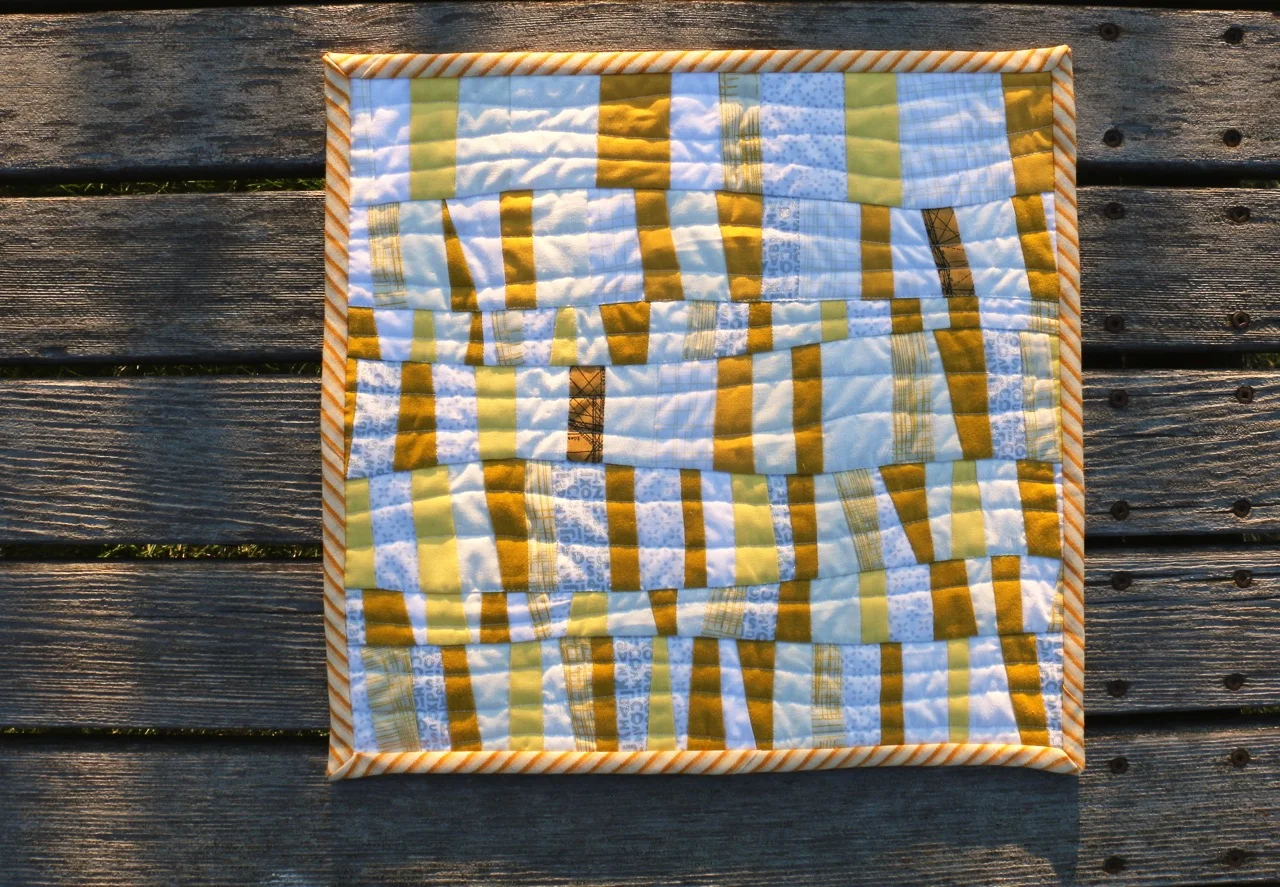Longtime readers of this blog will know that I've had a goal for a few years to make the next in my Alberta Landscape series. It's been percolating so long I think the water is tepid now. Then something happened at QuiltCon.
I signed up for Gwen Marston's class. She is a personal hero of mine and it was Liberated Quiltmaking, the book, that set me on a creative path I am loathe to ever stray from. So while yes, I am totally comfortable with Improv and I am not a fan of small quilts, I signed up for her class on small studies. Best idea I've had in a very long time!
First off, it was good to find out that I share many similar philosophies with Gwen when it comes to making good Improv/Liberated quilts. Or perhaps I am more influenced by her than I give credit?
Second, she is a damn funny lady!
Third, the idea of a study for a larger work - while not new to me - was absolutely brilliant in this case. I wasn't interested in replicating Gwen's techniques or creating a stand alone Improv Mini Quilt. But when she talked about using a small piece as a study for something larger the landscape idea immediately popped into my head. More specifically, the Prairie winter landscape idea.
From the giant bag of scraps I'd brought to play with I pulled my golds and whites. That's it. I was picturing the cut stalks of straw, the golden stalks left in the field instead of being tilled under. They stand in undulating rows in the winter snow, gold on white. For the rest of the day I played, experimented with how I might sew these rows together. I thought I was working on a small scale but quickly realized this would be the exact height and width of my rows in a larger quilt (which means a lot of sewing when it comes to that one). But by fiddling on this piece I now know that.
To be honest, I thought I would make the little top and it would sit there as reference. But after a month of so hanging out in the corner of my design wall I decided to finish it. Some wavy line quilting that took about 30 minutes. Then bias binding scraps left over from a project in A Month of Sundays. So easy I don't know why I even debated finishing it.
A few more deadlines to make on some work projects and the big quilt just might get started. Well, maybe by winter.













